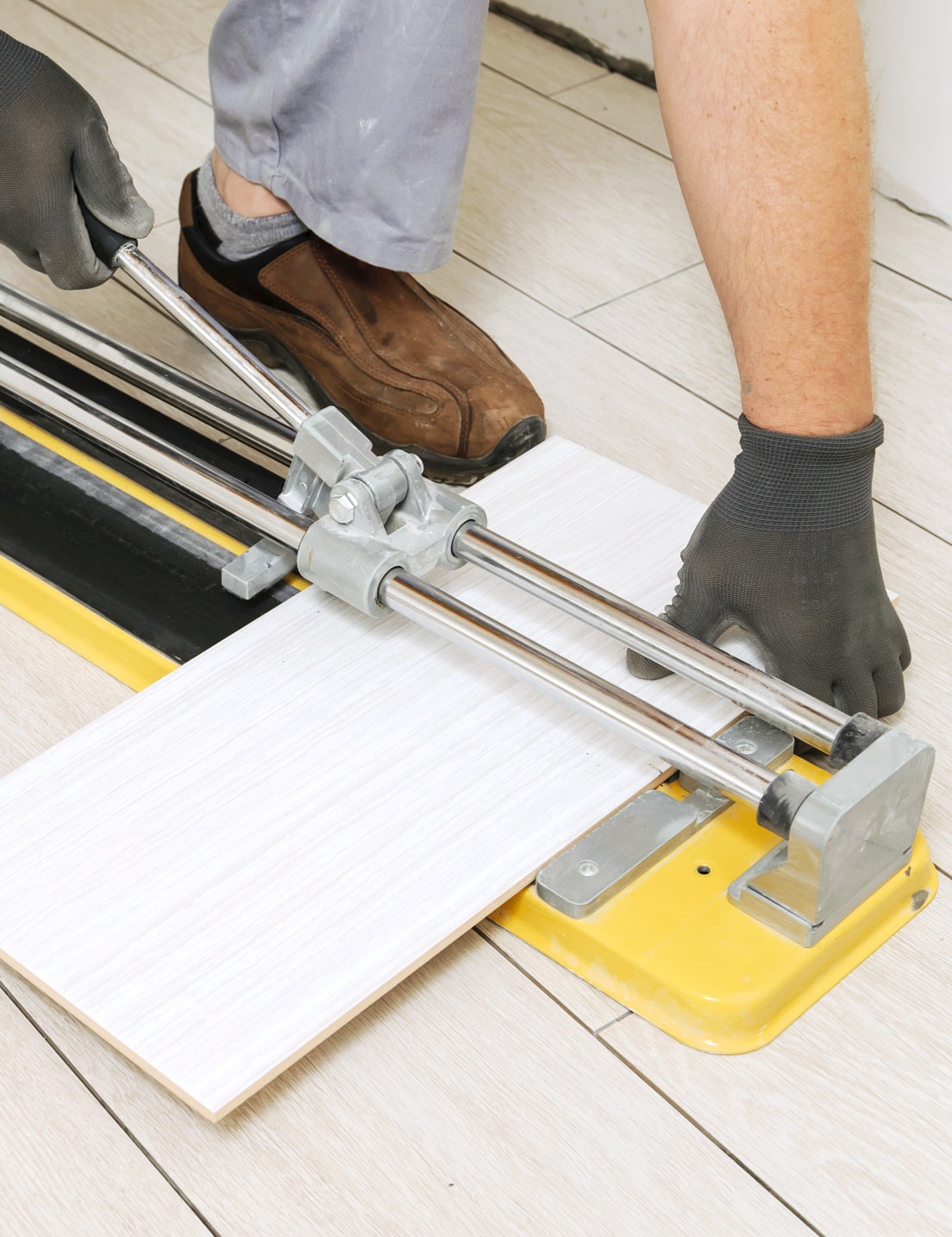


DIY & Advice
Working Safely With Tiles
Your safety is our number one concern, so let's take 5 to run through how to work safely with tiles.


Cutting Tiles Safely
Ceramic tiles are non-flammable, do not release any odours, vapours or chemicals and are considered non-hazardous to health under normal conditions during storage, handling and when installed.
Tiles are made from a combination of clays, feldspars and other naturally occurring minerals, some containing silica. The raw materials are mixed together and fired at high temperatures. As a final inert product, they will contain small amounts of sintered crystalline silica which is harmless unless it is finely ground as dust and inhaled.
Dust containing crystalline silica can be produced by dry mechanical cutting and grinding of concrete, stone, brick and ceramic tile during installation or by operations such as demolition and disposal. Grinding back or levelling the substrate along with the mixing of grouts and adhesives may also produce harmful dust if inhaled.
Wherever possible, cut tiles using a score and snap cutter or wet saw and before you start any cutting, review our General Safety tips above and wear the right gear from head to toe, in particular an approved mask. Avoid dry cutting or grinding with an electric grinder. If this cannot be avoided, use equipment fitted with integrated dust collection systems or appropriate exhaust ventilation away from the operator. Use an appropriate, approved, well-fitting respirator whenever other controls are not effective to keep dust below workplace exposure standards for airborne contaminants limits (these are available from (Safe Work Australia or State-based WorkSafe Agencies). Score and snap cutting or wet cutting methods are always recommended as well as cutting in an external or well-ventilated area. For regular tradespeople working with tile and stone, effective dust controls, such as score and snap, on-tool water suppression (which includes wet saws) or on-tool dust extraction, need to be used when these tasks such as grinding or cutting are performed.
Our Hot Tip: Avoid dry cutting or grinding with an eclectic grinder, if this can’t be avoided, use equipment fitted with integrated dust collection systems. Find out more about Cutting Tiles here!
Our Hot Tip: Work Safe Australia or your State based WorkSafe Agency can advise recommended exposure standards for airborne contaminants.
General Safety With Tiles
Remember, if you’re demolishing tiles, we need to ensure your safety and also that of your family, you don’t want silica dust flying around the house.
For an at-home DIYer - let’s keep it simple; wear a silica safe mask at all times and add the safety tips for an event-free DIY.
Breathing Protection
Wear the appropriate Respiratory Protective Equipment (RPE), it needs to comply with the standard AS/NZS 1716 – Respiratory protective devices. Check the product information to make sure RPE is AS/ NZS 1716 compliant.
Hearing Protection
When using any powered cutting or grinding equipment, always use appropriate hearing protection.
Eye Protection
Whether you are cutting tiles with score and snap, wet saw, electric grinder or tile nippers, always wear appropriate safety glasses. Sharp pieces of tile and stone, even very small ones, are better kept away from your eyes.
Clothing
When cutting tiles or working with adhesives, it is always advisable to wear protective gloves, steel-capped boots, protective workwear such as long pants and a long sleeve shirt.
Bending and Lifting
Remember that tile boxes can be heavy. Bend your knees and lift carefully. Get help if you need it, especially with large format tiles! Don't try to lift large format tiles by yourself - ever.


Breathing protection tips:
- Water suppression uses water at the point of dust generation to dampen down or suppress dust before it is released into the air. Combined with respirator masks and appropriate tools, this helps reduce the risk of breathing any harmful dust.
- DO NOT ‘clean up’ with compressed air or by dry sweeping. Dust should be removed using an industrial HEPA (high-efficiency particulate air) filter vacuum or dampened down and removed.
- Respiratory protective equipment (RPE) needs to comply with the standard AS/NZS 1716 – Respiratory protective devices. Check the product information to make sure RPE is AS/ NZS 1716 compliant.
- RPE needs to have at least a P2 filter and be tested to ensure it fits correctly. RPE that requires a facial seal, such as half-face respirators, should not be used by people with beards or even facial stubble. Where facial hair interferes with the fit of the RPE, a powered air-purifying respirator (PAPR) that does not rely on a facial seal needs to be used.
- No RPE can prevent all silica dust from being breathed in. It should be used in combination with other dust controls.
- RPE cannot protect you if it doesn’t fit properly.
- PPE such as RPE, aprons and boots should be cleaned after each use to ensure dust does not accumulate. For example, by using a low-pressure hose or wiping down with wet rags. Work clothes should not gather dust if exposure is appropriately controlled during processing work. However, if silica dust has settled on clothing, the contaminated clothing should be dampened, carefully removed and washed.
Our Hot Tip: Following our tips below will keep everyone safe on the job, if you need any more expert advice, we’d love to help you on 1800 4 TILES or you can pop into any of our 110+ stores




What Is Silica?
Many common building materials contain silica. Silica is a natural element that makes up 59% of the earth’s crust and is the main ingredient in the vast majority of natural stones such as granite, slate and sandstone as well as in sand and soil and clay.
Because they are made from natural materials, silica is found in natural stone, engineered stone, bricks, tiles, glass, mortar, cement, concrete slabs and blocks in varying amounts. There are different forms of silica but crystalline silica can cause serious health problems if the dust is inhaled or swallowed.
The amount of crystalline silica in products can vary. Indicative examples include:
- ceramic tiles: 5% to 45%
- engineered stone: 80% to 95%
- Sandstone: 70% to 90%
- Granite: 25% to 60%
- Slate: 20% to 40%
- autoclaved aerated concrete: 20% to 40%
- concrete: less than 30%
- brick: 5% to 15%
Crystalline silica dust can be harmful when it's inhaled over a long period of time at low to moderate levels, or for short periods at high levels. Silica is safe but if you create dust by cutting, drilling or grinding materials that contain silica (and also during the crushing or demolition and disposal of these products), breathing the dust can cause silicosis, a form of occupational lung disease caused by inhalation of crystalline silica dust causing inflammation and scarring in the lungs. Breathing amounts of silica dust above recommended levels can also cause emphysema and bronchitis and even lung cancer or kidney disease.
Silica dust particles are much smaller than normal dust (some so small they may not be seen). They can get deep into your lungs and stay there, permanently damaging the lung tissue and eventually leading to serious lung diseases in some people.
Our Hot Tip: For your health and safety, if you are working with tiles and cutting them in any way, you must wear a safety mask (grab one from your local hardware store). If you are removing an old tile floor, you must wear a silica safe mask.
